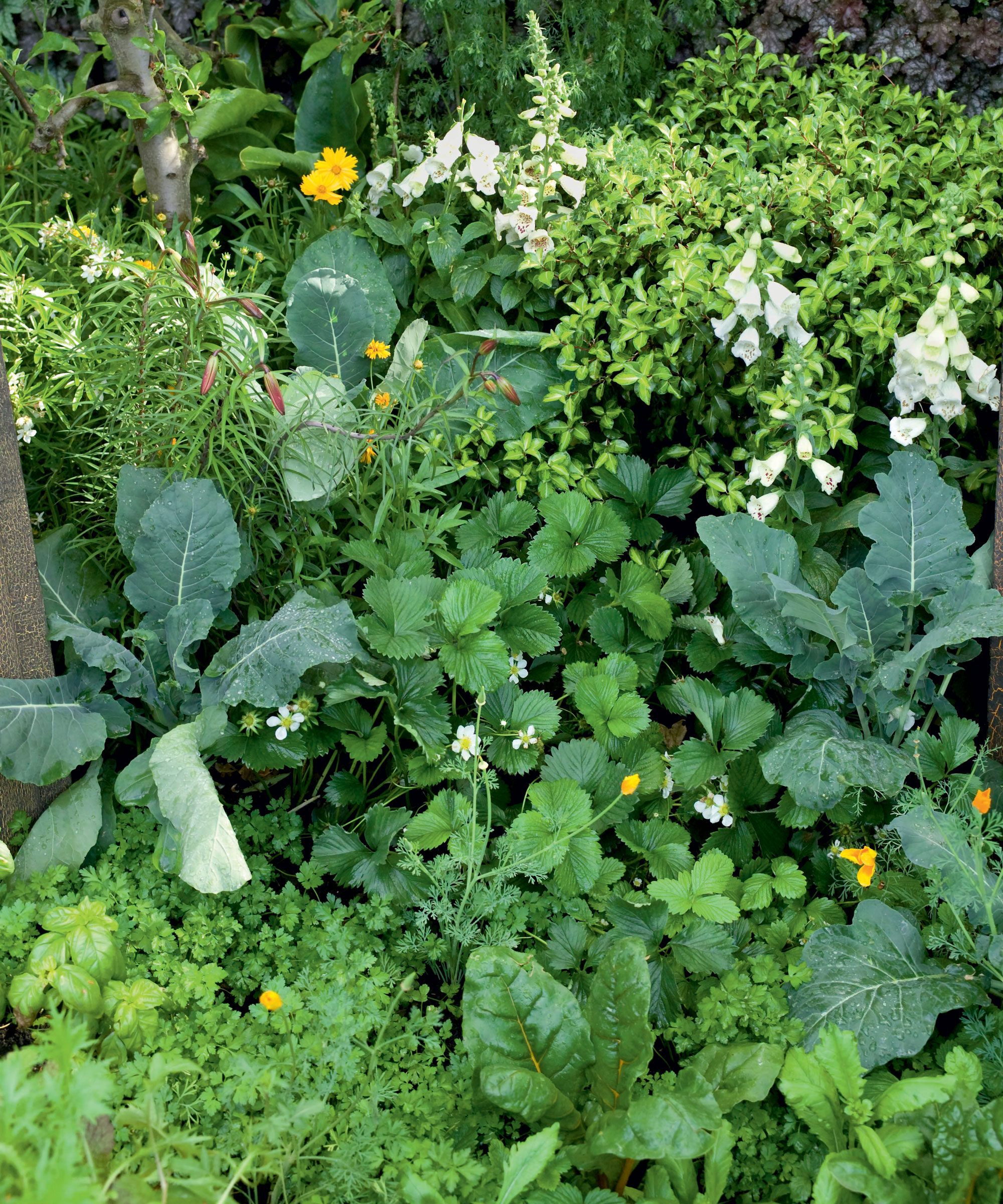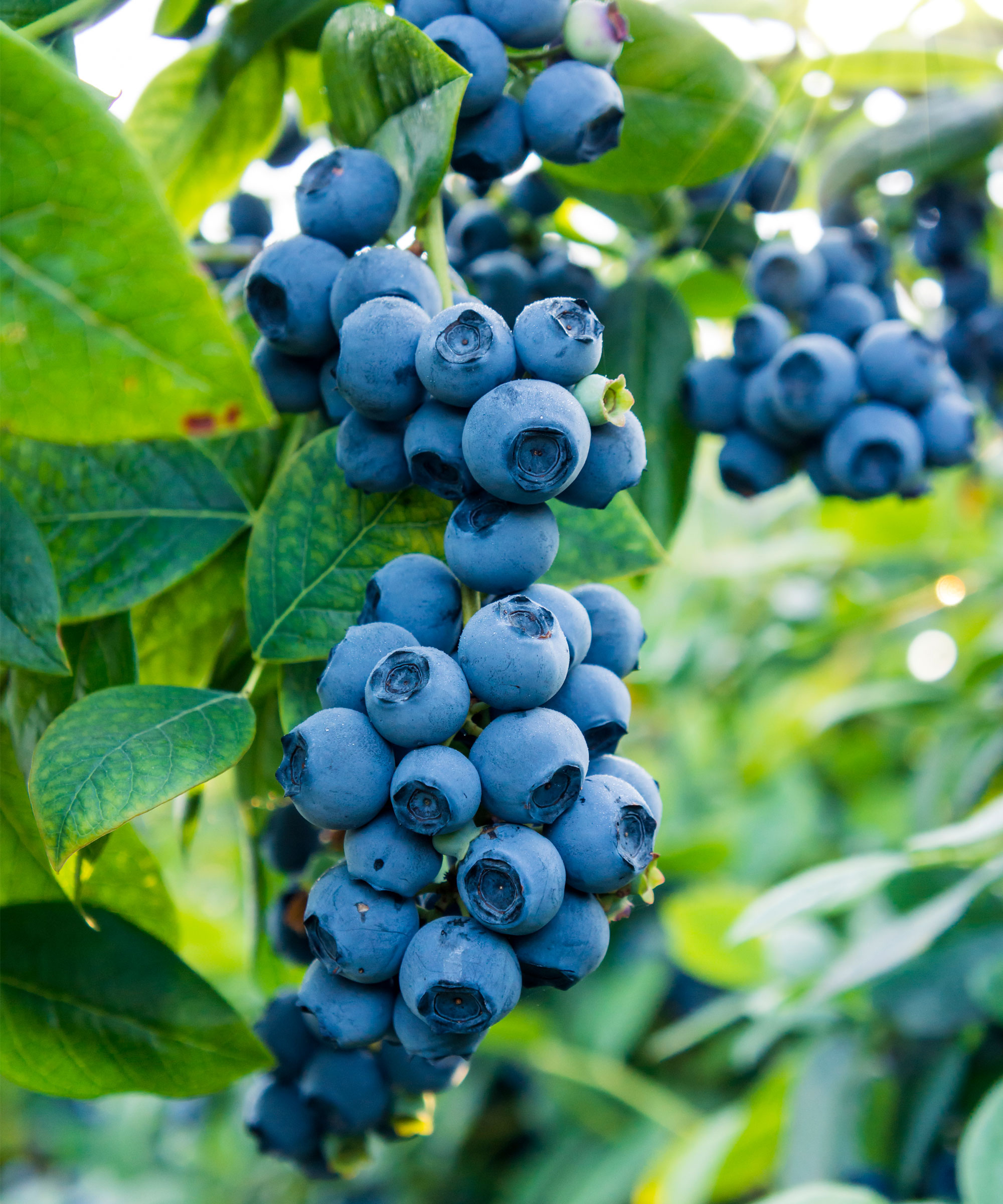Best edimentals to grow in eastern states – crops that can handle the range of temperatures and humidity that are ever-present along the East Coast
These ornamental edibles are perfect for East Coast gardens


If you love the idea of having fresh veg ready for the grill or picking your own plump juicy berries to top your morning yogurt, growing your own fruits and vegetables is the ultimate in flexibility. Your home doesn’t have to look farm-like either, thanks to crops we call edimentals.
The East Coast has a cornucopia of edible crops that also look right at home tucked in with your ornamental plantings. Plant some leafy greens among your perennials and your neighbors will be none the wiser. Meanwhile you’ll have fresh and nutritious meals with fewer trips to the store.
What are the edimentals that excel in the East Coast’s varying temperatures and humidity? We have gathered some ideas for you from regional experts on the topic. In the choice between edimentals vs bedding plants, these just may persuade you to turn your garden borders into your own personal farm market.

What exactly is an edimental?
‘An edimental, also called an ornaedible, are plants that provide a food source and ornamental value,’ Diane Blazek, Executive Director of the National Garden Bureau, explains.
She says that in the last few years, NGB has seen an increase in interest in the edimental category from home gardens, so much so that the organization added the term as a search function in its New Plants program.
‘They’re so versatile,’ Blazek says. ‘They can be annuals, perennials, shrubs, herbs and so on. A lot of edibles are now being bred not only for great taste, texture and yield, but breeders are also adding in ornamental aspects, as well as making the plants more compact so they are less rangy and look better in an ornamental setting.’
Annuals for the East

The East Coast has a wide range of USDA hardiness zones, from zone 3 in the mountains of Maine to zone 11 at the tip of Florida. A number of annual edimentals excel in this range, growing and thriving in a short summer season or longer where the weather permits.
Design expertise in your inbox – from inspiring decorating ideas and beautiful celebrity homes to practical gardening advice and shopping round-ups.
Here are some annuals that Blazek recommends as edimentals:
Lemon Balm (Melissa officinalis) hardy in zones 4-9. Its lovely green leaves add texture and fragrance to beds and border.
Basil (Ocimum basilicum), such as Everleaf Emerald Towers, a tall variety for filling in spaces in the garden. Hardy in zones 10-11.
Kale (Brassica oleracea var. sabellica.), hardy in zones 7-10. Its color range of greens and the textural elements of its leaves make it a standout in garden borders and containers.
Swiss Chard (Beta vulgaris var. cicla), hardy in zones 2-8. Blazek recommends the variety ‘Bright Lights’ for its vibrantly colorful stems.
A garden kneeler from QVC will make accessing your planted annual edimentals more comfortable.
More generally, flowers such as nasturtium (Tropaeolum majus, zones 2-11) and calendula (Calendula officinalis, zones 2-11) are often thought of as ornamentals but are delicious in salads and as dessert toppers.
Both are easy to grow from seed. Mizuna (Brassica rapa var. nipposinica) and other lettuces with red, bronze or speckled leaves can add color and texture in gardens without an inkling to their final destination (your plate!).
A long-handled watering wand from Walmart will help you water your edimentals tucked into your garden border.

As the Executive Director of the National Garden Bureau, Diane leads all their programs, including the esteemed All-America Selections (AAS) trialling program. Following 15 years as President and Publisher of Ball Publishing, Diane found her true calling in her current role (since 2010), where she enjoys fostering a love for gardening among consumers. Her leadership is driving an exciting era of growth for both NGB and AAS, marked by the development of creative and forward-thinking programs designed to engage consumers, empower garden communicators, enrich public gardens, and support industry professionals.
Perennials for hardy East Coast zones

Some edimentals are meant for the garden border, as a wholesale turnover of a vegetable garden often means taking care not to disturb the workhorse perennials.
Without fail these perennial edimentals have texturally interesting foliage with the bonus that it comes back every year. Some of the more interesting perennial edimentals include:
Chives (Allium schoenoprasum), hardy in zones 3-9. There purple flower heads add fun color to a springtime planting bed.
Asparagus (Asparagus officinalis), hardy in zones 3-8, is valued for its feathery fern-like foliage after harvest season, adding soft structure and vertical interest.
Find live plants, seeds and bare roots of asparagus at Burpee.
Rhubarb (Rheum rhabarbarum), hardy in zones 3-8, is prized for its tart stalks in the kitchen but also boasts bold, architectural leaves and striking red stems in ornamental beds.
Jerusalem artichokes, or sunchokes (Helianthus tuberosus), hardy in zones 3-9, produce cheerful sunflower-like blooms atop tall, leafy stems. The edible part? It’s underground tubers.
Edible shrubs for eastern states

The structural foundation of a garden bed, fence planting or even a patio planting are shrubs. Those shrubs can do double duty by provided food as well as form.
Jordan Williams, communications manager for Star Roses and Plants, says one of the breeding company’s favorite edible ornamental plants is the BerryBux blueberry (Vaccinium corymbosum hybrid, zones 5-8).
‘It looks like a boxwood but has the bonus of producing blueberries,’ she says. ‘Its boxwood-like foliage and compact habit make it perfect for planting as a hedge or in groups. It’s a whimsical alternative to a more traditional garden design.’
Another recommendation from Jordan is a blueberry variety called Peach Sorbet (Vaccinium corymbosum, zones 5-10). ‘It’s so nice planted with annuals or perennials, either in large containers or in a garden,’ she explains.
‘At round 2-ft. tall, it’s a great size to fit between other shrubs. The real magic of this variety as an edimental is that it has tricolored foliage in shades of pink, orange, and emerald-green, and in most climates, it keeps its leaves through winter, turning a rich eggplant-purple.’
Currants are a beautiful addition to a garden border or even a large container. At just 3 ft. tall, currants produce small red, black, white or pink juicy berries, the perfect pick-and-eat treat.
Shears to trim your edimental shrubs are available on Amazon.

Jordan is the Communications Manager for Star® Roses and Plants. She writes copy and crafts messaging for the company’s products, programs, and four major brands, including The Knock Out Family of Roses, Drift Roses, Bloomables, and Bushel and Berry.
One of the perks of using edimentals in your planting beds is that they fill up empty spaces quickly. Sprinkle seeds of leafy greens in spaces left by spring or summer ornamental bulbs and you’ll have an edible filler in a matter of weeks. For ideas on what to crop, check out our guide the seven salad crops to sow in August for an early fall harvest.

Ellen Wells is a horticultural communications consultant with 30 years experience writing about all aspects of the gardening world, and for GardeningKnowHow.com since 2024. She specializes in retail horticulture, vegetable gardening and tropical plants. Ellen is based in southern New England where she gardens in zone 7a.
You must confirm your public display name before commenting
Please logout and then login again, you will then be prompted to enter your display name.